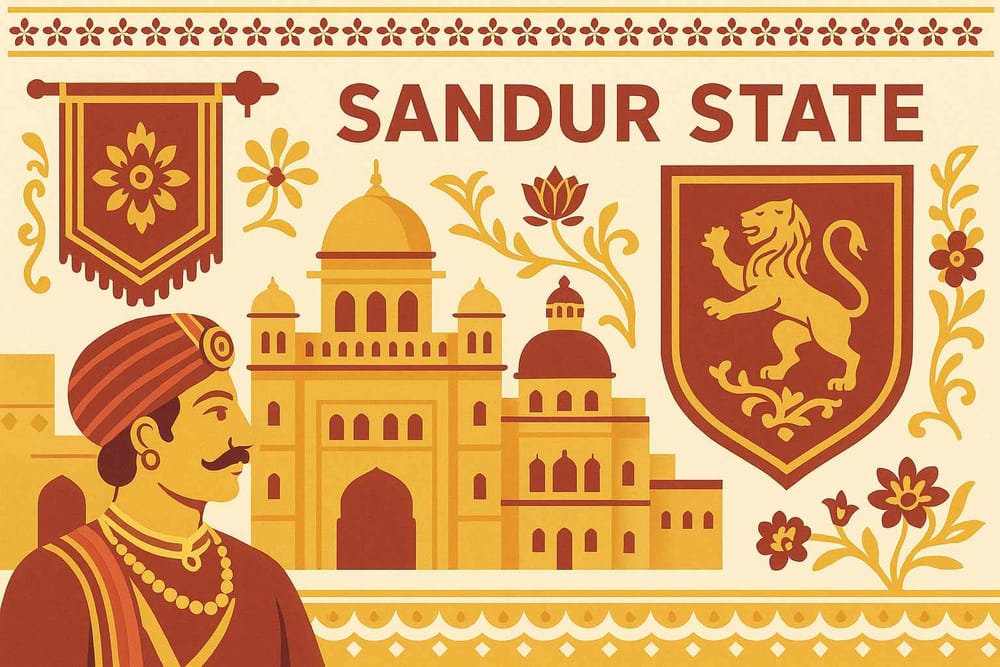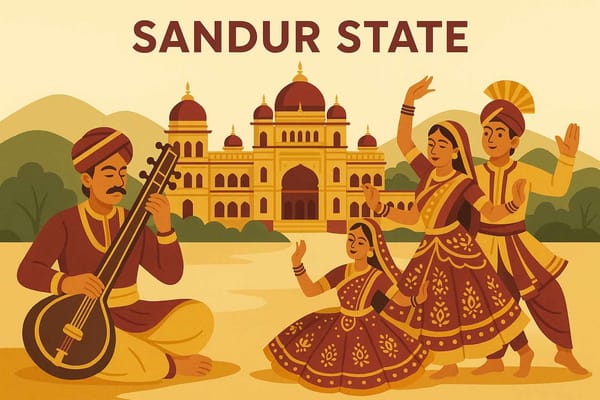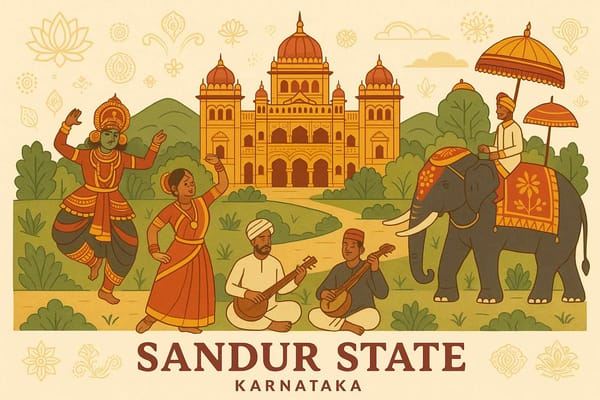
Sandur State History-Legacy-Influence: A 2025 Exploration
There are some places in India that you don't just visit; you feel them. They whisper tales of kings and queens, of resilience, and of a culture so vibrant it colours the very air you breathe. For me, Sandur in Karnataka is one such place. It’s not just a dot on the map known for its iron ore; it's a treasure chest of history, a living saga of a royal family that chose welfare over wealth, and nature over industry. Let’s take a walk through the heart of this incredible princely state, shall we?
The Royal Saga: How a Maratha Dynasty Carved a Kingdom
The story of Sandur is deeply connected with its rulers, the Ghorpade dynasty, who brought their Maratha heritage to the Deccan plateau in the 18th century. Imagine, amidst the grand empires and political storms of British India, this small state held its own. The Ghorpades weren't just rulers; they were visionaries. They understood that true strength didn't come from a large army but from a happy, prosperous community. This wisdom is what defines the history of Sandur State.
Surrounded by lush green hills, the state was blessed with immense mineral wealth. But instead of just exploiting it, the rulers created a unique model of governance that focused on development. When India moved towards independence, Sandur gracefully became part of the Union in 1949, merging first with Madras State and later becoming an integral part of Karnataka in 1953. Its transition wasn't just a political change; it was the beginning of a new chapter in its enduring legacy.
More Than Bricks and Mortar: The Enduring Legacy of the Ghorpades
What does a kingdom leave behind? More than just forts and palaces, Sandur’s legacy is woven into the fabric of its society. The Ghorpades believed in uplifting their people, which is why they focused heavily on building schools and hospitals. You can still feel their presence in the architectural marvels they left behind, like the stunning Shivavilas Palace, once their home and now a beautiful heritage hotel where history breathes in every corner.
But what truly touches my heart is their deep respect for nature. Long before 'environmentalism' became a buzzword, the rulers of Sandur made it their duty to protect the region's rich biodiversity. The forests and wildlife in the Sandur Hills are a testament to their foresight. This commitment to preserving spiritual and natural heritage is a powerful example of a royal spiritual legacy, reminding us that true rulers are custodians of both their people and their land.
The Cultural Heartbeat of Sandur
The true significance of Sandur lies in its vibrant culture, a beautiful blend of Maratha and local Dravidian traditions. This is a place where every festival, every art form, tells a story.
- The Lambani Craftsmanship: The Lambani community here is world-famous for their incredible embroidery. Their textiles are a riot of colours, mirrors, and intricate stitches. It’s not just clothing; it’s a narrative of their identity and heritage, a specific tradition that makes Sandur so unique and cherished.
- Spiritual Sanctuaries: The land is dotted with spiritual landmarks that have stood for centuries. The ancient Kumaraswamy Temple is one such key landmark. It’s not just a place of worship but a centre of immense spiritual energy and architectural brilliance, drawing devotees and history lovers alike.
From the unique flavours of its local cuisine, passed down through generations, to the grand celebration of festivals like Dasara, Sandur's culture is a living, breathing entity. It’s this very essence of devotion and cultural storytelling that we at Bhaktilipi aim to capture and share.
Sandur in 2025: Where Tradition Meets Tomorrow
So, what does Sandur’s influence look like in modern India? It stands as a powerful example of sustainable development. The region continues to be a major player in the mining industry, yet there's a conscious effort to balance this with eco-tourism and conservation. As you plan your exploration for 2025, you'll find that Sandur offers more than just sightseeing.
You can trek through the Sandur Hills, witness the amazing work of local artisans whose crafts are now reaching a global audience, and experience a heritage that is being actively preserved. The spirit of Sandur isn't a relic of the past; it’s a guiding light for the future, showing how progress and tradition can walk hand-in-hand.
Exploring the history and legacy of Sandur State is like reading a beautiful piece of devotional literature. It connects you to something deeper, something timeless. At Bhaktilipi, we are dedicated to preserving and sharing these timeless devotional stories and literature. We collect works from different regions to ensure this rich heritage is never forgotten, reimagining them for today's readers while staying true to their sacred roots.
To discover more stories like that of Sandur and connect with India's profound spiritual heritage, we invite you to explore our platform. Stay updated with our latest posts and reflections by following our journey.
Join our community as we celebrate the unending beauty of India’s devotional and cultural tapestry!
A passionate group of people dedicated to preserving India's knowledge of Dharma, Karma, and Bhakti for ourselves and the world 🙏.
Comments
Related in

Unveiling the Legacy of Sandur State: History and Culture
In the grand tapestry of India's history, woven with tales of mighty empires and legendary kings, some threads shine with a quiet brilliance all their own. The story of Sandur is one such thread. Tucked away in the mineral-rich hills of Karnataka's Bellary district, this princely

Sandur State History: Culture Blooms in Karnataka
Some places in our country are like hidden treasure chests, holding stories of courage, art, and a way of life that continues to whisper to us through the ages. Tucked away in the green hills of Karnataka’s Bellary district is one such gem – the former princely state of Sandur.

Exploring the Legacy of Sandur State- A Historical Perspective
In the heart of Karnataka's Ballari district, cradled by ancient, iron-rich hills, lies a story that echoes through time. It's not just a tale of a kingdom, but of a legacy that breathes even today. This is the story of Sandur, a princely state where a
